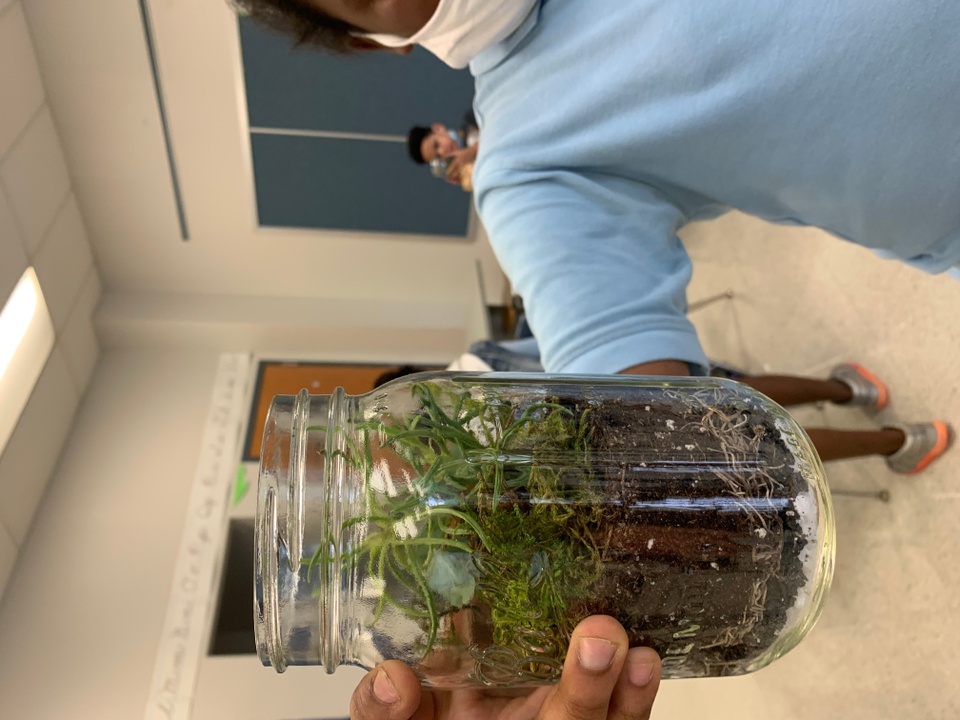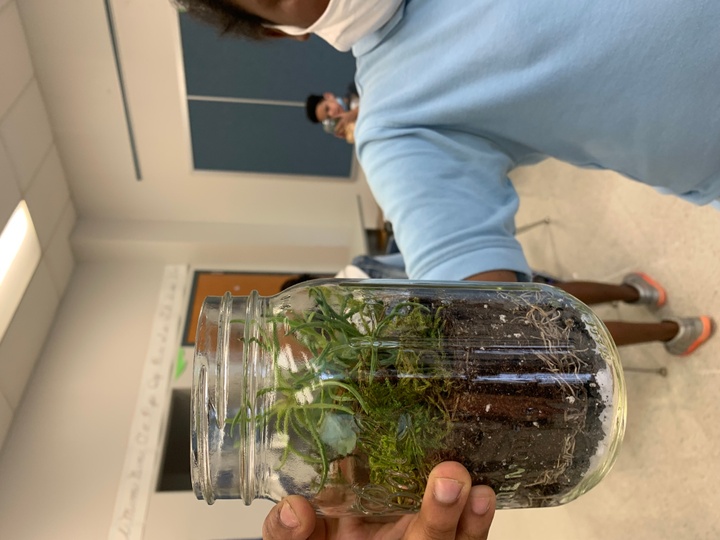Exploring other realms in Dutchtown with Tiffany Dockins
Tiffany Dockins (MArch22/MUD22) has always been ready to explore opportunities that cover new disciplines and skills—including jumping into a planning project at Marquette Park as part of her CityStudioSTL Fellowship, and most recently as the Green Schoolyard Fellow working with Dutchtown South Community Corporation. We caught up with Dockins about her recent efforts and what she’s learned.
UPDATE: Dockins wins 2021 Outstanding Student Project Award from the Missouri Chapter of the American Planning Association for the Marquette Master Plan, created with PGAV Planners.
Tell us how you became interested in architecture and urban design?
I did my undergrad in architecture at Morgan State University, in Baltimore, Maryland. Baltimore is also my hometown. While I was in school, trips to DC and out into Baltimore city got me thinking about the context of people when it comes to buildings and urban form. I got drawn into urban design studios my junior and senior year, and these gave me a chance to see neighborhoods, see what elements and amenities were there and what barriers were created by urban form. In Baltimore, like St. Louis, you can see the places where people financially prosper, and where they don’t, and I wanted to learn more about what makes places that way.
As a dual degree student, urban design courses have really opened my eyes to what is behind the façade of the world we live in. Where architecture might be more about the building, and site analysis is pretty light, urban design looks more into the people and what they might want or need, in order for their environment to benefit them. The conversations we have are really socially impactful: we talk about how people experience the world, as opposed to just what the building looks like.
What has your experience been learning about urban design and architecture in the classroom?
Faculty at WashU are really socially engaged and are very open about having those conversations and doing work that’s geared towards making an impact. They’re not just doing it to get awards—it’s more about people and understanding the city where they work. They’re actually talking about the things that are real, like racism, deprivation, and where investment is going. I’ve really appreciated that conversations in urban design have been about these issues, and it hasn’t mattered who’s in the room—these topics are important all around.
One thing I’ve really appreciated is that faculty like Linda Samuels and Patty Heyda will introduce organizations and people who are actively making a change around the city. It shows that people are doing things, and it’s OK to partner with them, as opposed to only working with famous well-known figures. You can do meaningful work on a smaller scale.
I’ve also been learning to make it my mission to understand what’s present and what was there before, as opposed to keeping the pieces isolated. It’s led me to questions like: What’s important? Whose stories are being told and whose aren’t? There are also questions I don’t know the answer to yet, like who is allowed to make these rules and create barriers? Where does power come from and how to change them?
What’s the project you’ve been working on in Dutchtown?
I’m serving as the Green Schoolyard Fellow, working with Froebel Literacy Academy in the Dutchtown neighborhood. The project I’m part of is a pilot project for Missouri, building on the efforts of Green Schoolyards America. The program partners with schools to redevelop their asphalt schoolyards by adding softer surfaces, green space, places for gardening, shading, outdoor classrooms, and green infrastructure like cisterns, rain gardens, and bioswales. This is particularly important in St. Louis, where we have a lot of stormwater issues due to our combined sewer system.
As the Fellow on this pilot project, I’ve been learning as I go. I am working with the Dutchtown South Community Corporation, and my primary role is the community engagement lead during the project planning process. I’ve been creating a community-led advisory board, which includes people from community organizations, Froebel Elementary, and environmental organizations. With the group, I’m creating a template for other schools that would go through this process, addressing things like what types of partners they should have, what strategies they should consider, and what amenities should be a priority for the project. The partners on the advisory board are already working in the community, and understand what residents want and how to reach out to them.
What are some skills that you’ve developed in the past that you’ve used during this fellowship?
Right now, we’re discussing methods to reach people and how to get the project out into the community. Last summer, I was a CityStudioSTL Fellow with PGAV Planners, and worked on a planning project at Marquette Park. The neighborhood saw what I did last summer, when I figured out different ways to engage with people, despite COVID-19. Now, I’m using experience from that project for ideas about how to talk to people about what they might want and expect from this project, virtually and in person. I’ve been finding different ways to collaborate with people, like using Jamboard or Miro to set up templates for brainstorming.
During my CityStudioSTL Fellowship, I learned more about asking questions and listening to what people want. In school, we make all the decisions on things. When you’re engaging with the public and community, it’s more about listening and figuring out what people might want and using your position to help those decisions a priority. Even the smallest things, like places to sit or less trash, mean designing something super incredible when their officials haven’t prioritized those needs in the past. There’s more than just designing buildings.
What are some of the tools you’ve been developing?
I’ve been talking with teachers about doing engagement directly with kids, to let them know about the green infrastructure and systems that are coming. I’m trying to break down the issue of eco-literacy, because right now they’re not studying topics that fall into the range this project is bringing. I created an engagement plans and lessons with different resources, including curriculum that already exists. It includes lesson plans, videos, and things teachers can do to introduce the topics. I’m hoping that we’ll be able to have some in person engagement with students during their summer program this year. My role continues until December of 2021, but the time frame may shift based on future conversations.
What do you want other students to know from your experience?
We don’t necessarily have to stick to just architecture or urban design things! There are other opportunities to use our abilities. I was hesitant about the CityStudioSTL Fellowship with PGAV Planners because I had no planning experience at all, and very little experience talking with the public or engaging—I’d basically use my site analysis experience with Google Maps or first-hand site assessment walks. But even though the opportunities might not be completely related, they can be valuable and can produce more designers that care about more things.
In undergrad, a professor advised that it was OK not to work at an architecture firm all the time, and that you can find other things that can still help you with your design journey that are impactful. All along, I haven’t been afraid to do something different or learn other things that weren’t architecture. If you open yourself up, you’ll find good things in other realms that you can dabble in. Some people end up finding their niche there! It’s way more useful to try other things and let that benefit you.






